Happy Birthday David Bowie! – Ranking his Albums worst to first
On January 8, 2014 rock legend David Bowie turns 67. A year ago on this date he shocked his fans and the music industry by dropping a new single and video, “Where Are We Now?”, and announcing the forthcoming release of his first studio album in a decade, “The Next Day.” Now that we’ve had nearly a year to digest his latest work (and it landed at Number 1 on my Top 30 Albums of 2013), it seems a good time to explore his back catalog, celebrate his entire career and see where his albums stack up. It’s a challenging task because Bowie has one of the most impressive and stylistically diverse catalogs of music in rock history. Obviously such a list is a subjective exercise, and fans should feel free to post their own lists in the comments section below.
Twenty-seven studio albums are ranked below from worst to first, not including compilations, live albums, soundtracks that are not full Bowie albums, or other miscellaneous releases. That said, here we go:
 27. David Bowie (1967)
27. David Bowie (1967)
Bowie’s first album bears little resemblance to the rest of his catalog. It’s an eccentric collection of twee ‘60s pop strongly influenced by vaudeville and the theatricality of artists like Anthony Newley. It’s an interesting listen from a historical perspective and shows a few hints of the genius to come, but it’s largely a collection of novelties and odd little curios of interest to completists only. Unsurprisingly, Bowie’s debut album was a commercial failure when it was released and he changed direction rather quickly.
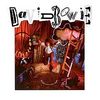 26. Never Let Me Down (1987)
26. Never Let Me Down (1987)
Overblown, bombastic and laden with ‘80s arena-rock clichés, “Never Let Me Down” was Bowie’s ill-advised attempt to maintain the commercial success he enjoyed earlier in the decade with “Let’s Dance.” Unfortunately it collapses under the weight of its heavy production, and the material isn’t strong enough to redeem it. There are a couple notable exceptions — the title track is rather lovely, and the menacing “Time Will Crawl” is by far the best moment on the album.
 25. Tonight (1984)
25. Tonight (1984)
Following the success of “Let’s Dance,” Bowie sought to continue his newfound mainstream popularity with this quirky patchwork collection of covers, new original material, and reworkings of songs he’d previously recorded with Iggy Pop. Most of it is throwaway material and his heart doesn’t seem to be fully into it, but there are a few gems. “Blue Jean,” which was the first single and a Top 10 hit, and the powerful opener “Loving the Alien” are both excellent, but the finest moment is the exceedingly tight, heavily rhythmic “Tumble and Twirl” with its exciting, frenzied brass arrangement (played by the Borneo Horns) and terrific acoustic guitar sequence near the end.
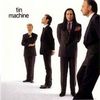 24. Tin Machine (1989)
24. Tin Machine (1989)
After the “Never Let Me Down” fiasco, Bowie rebooted and formed Tin Machine, a project featuring guitarist Reeves Gabrels and the rhythm section of Tony and Hunt Sales. It was a blunt assault of searing, raw, back-to-basics hard rock. As refreshing as the change of pace may have been, the material just wasn’t there to make it really work. It’s also marred by an exceptionally awful cover of John Lennon’s “Working Class Hero.” The songs in general are rather forgettable, although the ferocious first single “Under the God” is a notable exception. Perhaps the strongest track, “I Can’t Read,” was re-recorded eight years later in a far superior version for the film The Ice Storm. “Tin Machine” is mostly useful as a much-needed change of direction for Bowie — far better things were on the horizon.
 23. Space Oddity (1969)
23. Space Oddity (1969)
For many fans, Bowie’s career really begins with “Space Oddity.” The surreal and psychedelic space opera is an undeniable classic and one of his signature tunes. The rest of the album, though, is hit and miss — largely meandering, folky, acoustic-based tunes that don’t stand up to his later work. The best track apart from the title song is probably “Wild-Eyed Boy From Freecloud,” although the stripped-down single version that appears on the “Sound and Vision” box set is superior to the album version with it’s overwrought string arrangement.
 22. Pin Ups (1973)
22. Pin Ups (1973)
Bowie’s covers album “Pin Ups” is a collection of his recordings of some of his favorite singles by English artists like The Who, The Yardbirds, The Kinks, Pink Floyd and others. Ultimately most of his versions can’t compete with the originals, and “Pin Ups” ends up being little more than a mildly interesting although generally well-executed side-project. The exception is his superb take on The Merseys’ “Sorrow,” which became a #3 hit in the U.K.
 21. The Buddha of Suburbia (1993)
21. The Buddha of Suburbia (1993)
Even though it’s a soundtrack to a BBC mini-series, “The Buddha of Suburbia,” unlike “Labyrinth,” is a full collection of new Bowie material and so is included on this list. Much of it is semi-instrumental, experimental material. It’s a mixture of electronic tracks influenced by early-90s trip-hop rhythms and more ambient pieces. The best moments are the title song and the aggressive electronica of “Dead Against It,” a highly melodic gem that foretells the style he would later explore in more depth on the “Earthling” album.
 20. Earthling (1997)
20. Earthling (1997)
“Earthling” is Bowie’s attempt to merge the drum and bass sound so prevalent in the ‘90s with the heavy industrial power of artists like Nine Inch Nails. As a result, “Earthling” sounds very much of its era and is an awkward fit with the rest of his catalog. Working closely with Reeves Gabrels, “Earthling” is all about hard electronic beats, samples and searing guitar riffs. There are a few excellent tracks, in particular “Battle for Britain (The Letter)” and “I’m Afraid of Americans,” but “Earthling” is more about textural and sonic experimentation than compelling songwriting.
 19. Black Tie, White Noise (1993)
19. Black Tie, White Noise (1993)
After the hard rock of the two Tin Machine albums, Bowie changed course once again. For “Black Tie, White Noise” he enlisted “Let’s Dance” producer Nile Rodgers for a modern take on his “Young Americans”/”Let’s Dance” template of soulful pop/rock. It has a few weak spots, but most of the album is quite good. Particularly potent is the edgy first single “Jump They Say,” written about the suicide of his brother. Other key moments are his soaring cover of the Walker Brothers’ “Nite Flights,” and the thrilling electronic rock of “You’ve Been Around.”
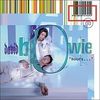 18. Hours… (1999)
18. Hours… (1999)
Bowie’s last offering of the ‘90s, “Hours…” is a return to a more traditional rock sound and songwriting structure. The first half of the album is loaded with gems like the stately first single “Thursday’s Child” and the beautiful acoustic ballad “Seven.” The second half isn’t quite as strong, but the fierce guitar-rocker “The Pretty Things Are Going To Hell” is stellar. “Hours…” feels like a transitional album — it’s a guidepost to the style Bowie would employ over the course of his next two albums, both of which are superior.
 17. Tin Machine II (1991)
17. Tin Machine II (1991)
Arguably the most underrated album of Bowie’s career, “Tin Machine II” is also one of his least successful. It reached a paltry #126 on the Billboard Album Charts upon release. A shame, because the songwriting and arrangements have far more depth than the first Tin Machine album, and there are several top-notch tracks: “You Belong in Rock n’ Roll,” “One Shot,” “Baby Universal,” “Goodbye Mr. Ed” and “Shopping for Girls” are all superb. Slice off the two throwaways written and sung by drummer Hunt Sales and rebrand it under Bowie’s name instead of the “Tin Machine” moniker and it might have been hailed as a strong return to form. As it is, “Tin Machine II” is a widely neglected album that deserves a thorough reevaluation by critics and fans alike.
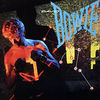 16. Let’s Dance (1983)
16. Let’s Dance (1983)
“Let’s Dance” is hard to rate because it veers between stunning highs and brutal lows. The taut, tensely dramatic “Let’s Dance” and “China Girl” are both first-rate singles, and the infectious “Modern Love” is a winner as well. But then the album is saddled with the atrocious “Shake It” and a far inferior version of his 1982 collaboration with Giorgio Moroder “Cat People (Putting out Fire).” On the strength of the three singles mentioned above, the Nile Rodgers-produced album became a massive commercial hit and introduced Bowie to a new generation of fans via MTV. The title track became his second and last #1 pop hit in America.
 15. The Man Who Sold The World (1970)
15. The Man Who Sold The World (1970)
Following the somewhat aimless folksy meanderings of the “Space Oddity” album, Bowie shifted gears, plugged in, and rocked out. Produced by Tony Visconti and heavily reliant on guitarist Mark Ronson, “The Man Who Sold the World” put Bowie on the path to greatness. There are four essential Bowie classics here: the gripping title song, the wonderfully demented “All the Madmen,” the off-kilter acoustic ballad “After All,” and the epic guitar freak-out “Width of a Circle.” He wasn’t quite there yet, but “The Man Who Sold The World” was a huge leap forward artistically.
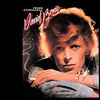 14. Young Americans (1975)
14. Young Americans (1975)
Bowie shifted gears yet again with “Young Americans,” going for a horn-heavy Philly-soul influenced sound featuring prominent background vocals by Luther Vandross, Ava Cherry and Robin Clark. The title track was a major hit, and he soared to #1 with “Fame,” a funky collaboration with John Lennon that was largely built around a Carlos Alomar guitar riff. The rest of the album is spottier — there are gems like the sumptuous ballad “Can You Hear Me,” but some of the tracks, like “Somebody Up There Likes Me,” meander far too long. “Young Americans” is solid, but it’s not on par with his best work of the ‘70s.
 13. Reality (2003)
13. Reality (2003)
Bowie’s last album before a 10-year hiatus, “Reality” is a strong collection of mostly straightforward rock. The hard-driving “New Killer Star,” written in response to 9/11, is a powerhouse opener. The defiant “Never Get Old” is a quintessential Bowie anthem, and the epic finale “Bring Me The Disco King” is a stunner. The rest of the album holds up rather well too, including a couple of intriguing covers. Bowie launched one of the finest tours of his career in support of the album (which was ultimately memorialized with the 2010 release of the superb live album “A Reality Tour,” perhaps the finest document of Bowie as a live performer that he’s ever released).
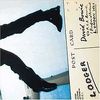 12. Lodger (1979)
12. Lodger (1979)
The third album in the “Berlin Trilogy,” Bowie dispenses with the ambient instrumentals on “Lodger” in favor of more conventional song structures. He doesn’t abandon the spirit of experimentation though, and “Lodger” covers a wide expanse of stylistic territory. “Lodger” seems a travelogue of sorts. A couple of the tracks, “African Night Flight” and “Yassassin,” have a distinct world-music flavor. Produced by Tony Visconti and once again featuring Brian Eno with Adrian Belew on guitar, “Lodger” is a darkly atmospheric album filled with wonderfully weird discordant melodies. Key tracks include “Fantastic Voyage,” the searing rocker “Look Back in Anger,” “DJ,” and the flamboyant first single “Boys Keep Swinging.”
 11. Outside (1995)
11. Outside (1995)
In the mid-90s, Bowie renewed his collaboration with Brian Eno and produced the darkest album of his career, “Outside.” It’s a concept album of sorts that loosely follows a back-story involving a grisly abduction and murder, and the strange cast of characters surrounding the crime. Unflinchingly dark and defiantly non-commercial, “Outside” is Bowie’s finest album of the ‘90s. A nightmarish but spellbinding journey through a demented underworld, high points include “The Heart’s Filthy Lesson,” the aggressive industrial-influenced “Hallo Spaceboy,” “I Have Not Been to Oxford Town” and the most melodic track on the album, “Strangers When We Meet.” It’s not an easy listen, but “Outside” is extraordinarily compelling once you let it sink in and peel back the layers.
 10. Heathen (2002)
10. Heathen (2002)
Bowie’s 2002 release “Heathen” is a triumph. The original plan was for an album called “Toy” which would feature re-recordings of some of Bowie’s early work from the ‘60s, and new material written in that same style. That project was ultimately shelved, but some of the tracks merged into what would become “Heathen,” giving it that past-meets-future vibe that he’s employed many times in the past (“Sons of the Silent Age” and “Drive-In Saturday” come to mind.) “Heathen” is deeply emotional, richly textured, and beautifully produced by Tony Visconti. Essential tracks include the sadly nostalgic “Slip Away,” the churning rocker “Slow Burn,” and the heartbreaking exploration of loss “Everyone Says Hi.”
 9. Scary Monsters (and Super Creeps) (1980)
9. Scary Monsters (and Super Creeps) (1980)
“Scary Monsters” is sensory overload. It sounds like the soundtrack to a mad alien carnival from one of the outer layers of Hell. Creative and unusual effects and arrangements abound, and the end result is riveting. “Ashes to Ashes,” the haunted and harrowing sequel to “Space Oddity,” is one of the most pivotal tracks of Bowie’s career. Songs like the gripping “Scream Like a Baby” and the jittery title track are seething with tension and an ominous aura of danger. “Scary Monsters” is the benchmark by which all Bowie albums after it have been judged — how many times in a review for a new Bowie album have we seen “The best since “Scary Monsters”? Like much of Bowie’s best work it’s a difficult first listen and takes a while to penetrate, but there is much to discover under the surface of this truly audacious masterpiece.
 8. “Heroes” (1977)
8. “Heroes” (1977)
The second of the “Berlin Trilogy,” “Heroes” follows the pattern of “Low” with half of the album instrumental and half with vocals. Bowie works again with Tony Visconti, Brian Eno and Robert Fripp, and the songs have a hard-edged, ferocious intensity. The title track is one of the finest studio creations of Bowie’s career and one of his signature songs. “Sons of the Silent” age is another epic creation, and the manic “Beauty and the Beast” opens the album with a sonic assault of discordant guitars and vocals that hits the listener squarely in the face. Jarring, uneasy, paranoid and harrowing, “Heroes” is a darkly compelling classic.
 7. Diamond Dogs (1974)
7. Diamond Dogs (1974)
Partially influenced by a planned but abandoned theatrical piece on George Orwell’s “1984,” “Diamond Dogs” is another dystopian vision of the future that seems to inhabit the same universe as “Ziggy Stardust.” Musically it’s a transitional album — there’s Bowie’s last great glam-rock single, “Rebel Rebel,” the Stonesy rock of “Diamond Dogs,” the melodrama of “Rock and Roll With Me” and “We are the Dead,” and the precursor to the more rhythmic, soulful style Bowie would soon embrace in the frantic paranoia of “1984.” The centerpiece of the album is the slow-building, brilliantly arranged suite of “Sweet Thing/Candidate/Sweet Thing Reprise” that takes up much of Side One. “Diamond Dogs” is stylistically diverse but it’s held together by great songwriting and an overpowering sense of unease over a desolate future.
 6. The Next Day (2013)
6. The Next Day (2013)
Bowie’s return after a 10-year absence is one of the bleakest creations of his long career. “The Next Day” is a breathtaking collection of songs that convey a palpable sense of dread. The fiery, hard-rocking title track opens the album with a boom and sets the tone. “The Next Day” is saturated with visions of violence, doomed love, wrecked lives, tyranny and blood. Frequently harkening back to earlier periods in Bowie’s career, “The Next Day” can be seen as a culmination of all that has come before it, and a vivid and troubling statement of a world overrun by madness. Bowie has recorded dark, dystopian fantasies in the past, but “The Next Day” is all the more powerful for its stark realness and its portraits of everyday lives rather than using characters or allegories as he has often done in the past. His finest album in four decades.
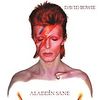 5. Aladdin Sane (1973)
5. Aladdin Sane (1973)
In part a continuation of the edgy glam-rock of “Ziggy Stardust,” “Aladdin Sane” also expands beyond “Ziggy” with the dramatic piano flourishes of Mike Garson and heavily theatrical pieces mixed in with the hard-driving rockers. The album opens with the crunching guitars of “Watch That Man” and then one great song follows another. “The Jean Genie,” with its signature bass-heavy riff, was the big single, but other essentials include the extraordinary torch-song finale “Lady Grinning Soul” which features one of the finest vocals of Bowie’s career, the theatrical melodrama of “Time,” and the urgent, foreboding rocker “Panic in Detroit.”
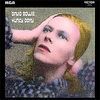 4. Hunky Dory (1971)
4. Hunky Dory (1971)
Bowie first masterpiece came in 1971 with “Hunky Dory.” It shows him growing in leaps and bounds as a songwriter, and includes some of the finest songwriting of his career: the utterly stunning cinematic classic “Life on Mars?,” the enigmatic and twisted introspection of “The Bewlay Brothers,” and one of his all-time great singles, “Changes.” “Hunky Dory” is more stripped-down than its predecessor “The Man Who Sold The World,” far more reliant on piano and acoustic guitar — although it does look forward to the glam rock to come on the flamboyant strut of “Queen Bitch.” Co-produced by Ken Scott, “Hunky Dory” is the album on which Bowie’s greatness first became evident for all to hear.
 3. Low (1977)
3. Low (1977)
Icy, forbidding, minimalist — “Low” was the first of the highly experimental “Berlin Trilogy” that Bowie recorded with Tony Visconti and Brian Eno. The first half is comprised of incisive song fragments and vignettes with often disturbing imagery. “Always Crashing in The Same Car,” with its ominous vibe and sinister ambiguity, is one of the most potent tracks Bowie ever recorded. Side One yielded two singles: the almost jaunty “Sound and Vision” and the desperately yearning “Be My Wife.” Side Two is a collection of stunning ambient instrumentals, a bold move for an artist like Bowie whose first priority was clearly not pop chart success. “Low” is one of the most influential albums of the ‘70s — its long shadow can be seen all over the new wave movement — and one of Bowie’s untouchable classics.
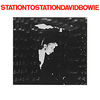 2. Station to Station (1976)
2. Station to Station (1976)
Six perfect songs comprise Bowie’s second greatest album, 1976’s “Station to Station.” It opens with the 10-minute powerhouse title track, a hypnotic piece that thunders out of the speakers like an runaway locomotive. “Station to Station” is an album made during a haze of cocaine and excess, and it sounds like it. It practically drips decadence. Sonically it’s a bridge between the blue-eyed soul of “Young Americans” and the bleak experimentation to come on “Low” and “Heroes.” Featuring guitarists Carlos Alomar and Earl Slick, Roy Bittan on piano, George Murray on bass, and Dennis Davis on drums, “Station to Station” is a tight, intensely cohesive collection with no wasted space. Bowie’s vocals are wildly unhinged throughout, especially on his wonderfully over-the-top take on the classic torch song “Wild is the Wind.” “Golden Years” was the big hit from the album, but “TVC 15” and “Stay” were also singles. Thirty-seven years after its release, “Station to Station” is still a stunning listening experience.
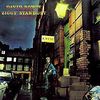 1. The Rise and Fall of Ziggy Stardust and the Spiders from Mars (1972)
1. The Rise and Fall of Ziggy Stardust and the Spiders from Mars (1972)
“Ziggy Stardust” is Bowie’s pinnacle. It’s his most famous album, the most famous glam-rock album ever recorded, and the album that sent Bowie through the stratosphere into a plane from which he’s never returned. “Ziggy Stardust” is a nightmarish dystopian fable of a world that’s ending in five years, leading humankind to descend into a nihilistic decadence. Ziggy is a doomed rock and roll superstar hero who emerges to lead the charge into oblivion. The album is built on depravity, emotional wreckage, and rock and roll glory. “Ziggy Stardust” has a keen sense of drama and vividly illustrates the meteoric highs and degenerate lows of which we are all capable. Sonically it packs a tightly powerful punch more than forty years after its release. Every song, from the wrenching “Five Years” to the glorious rock ecstasy of “Moonage Daydream” to the beautifully overwrought finale “Rock ‘n’ Roll Suicide” is a classic. Crisply produced by one of the best in the business, Ken Scott, and performed by Bowie with extraordinary guitar-work by Mick Ronson, Trevor Bolder on bass and Mick Woodmansey on drums, “The Rise and Fall of Ziggy Stardust and the Spiders from Mars” is an enduring masterpiece and one of the essential cornerstones of rock and roll.
Other recent articles:
Support Metro Weekly’s Journalism
These are challenging times for news organizations. And yet it’s crucial we stay active and provide vital resources and information to both our local readers and the world. So won’t you please take a moment and consider supporting Metro Weekly with a membership? For as little as $5 a month, you can help ensure Metro Weekly magazine and MetroWeekly.com remain free, viable resources as we provide the best, most diverse, culturally-resonant LGBTQ coverage in both the D.C. region and around the world. Memberships come with exclusive perks and discounts, your own personal digital delivery of each week’s magazine (and an archive), access to our Member's Lounge when it launches this fall, and exclusive members-only items like Metro Weekly Membership Mugs and Tote Bags! Check out all our membership levels here and please join us today!



















